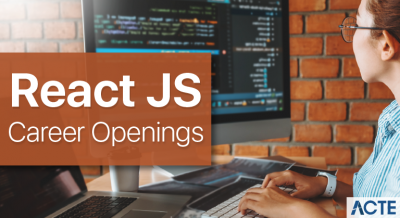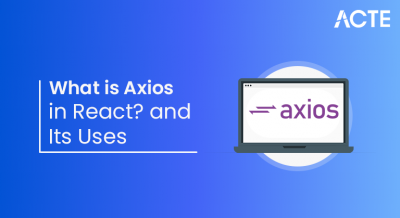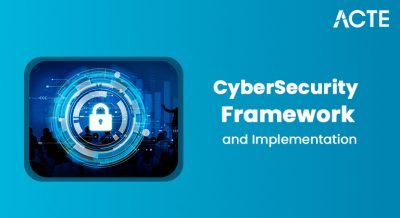
- Introduction
- Required Skills
- Knowledge of React Frameworks
- Familiarity with REST APIs
- Proficiency in JavaScript and ES6+
- Understanding of Redux and Context API
- Frontend Development Skills
- Testing and Debugging Skills
Introduction
React.js has emerged as one of the most widely used JavaScript libraries for building modern, interactive web applications, especially in the frontend development landscape. Developed and maintained by Facebook, React offers a powerful and flexible way to create user interfaces through a component-based architecture. This modular approach allows developers to break down complex UIs into smaller, reusable pieces, making the development process more efficient and the codebase easier to manage and maintain. A React developer focuses on crafting dynamic user interfaces by using components, managing application state, and applying efficient rendering techniques. They work with key React features such as hooks, props, context, and state to handle data flow and user interactions, which are commonly covered in Web Designing Training. React’s virtual DOM, along with its reconciliation algorithm, ensures that UI updates are performed in an optimized and responsive manner, which enhances the performance of applications. React is supported by a robust ecosystem, including libraries for routing, state management, and testing, such as React Router, Redux, and React Testing Library. This ecosystem further streamlines development and allows developers to build scalable applications with ease. Its compatibility with modern development tools and frameworks also makes React a preferred choice for both small projects and large-scale enterprise solutions. Organizations across various sectors, from startups to global tech companies, are leveraging React to create feature-rich, user-friendly web applications. As a result, the demand for skilled React developers continues to grow, offering strong career opportunities for professionals who specialize in this technology. Mastery of React is now considered a valuable asset in the modern web development industry.
Interested in Obtaining Your Web Developer Certificate? View The Web Developer Courses Offered By ACTE Right Now!
Required Skills
To succeed as a React developer, one must possess a well-rounded combination of technical and soft skills that enable the development of efficient, scalable, and user-friendly web applications. At the technical level, a strong foundation in JavaScript is essential. Developers should be proficient in ES6 and newer features such as arrow functions, template literals, destructuring, spread/rest operators, promises, and modules. These modern JavaScript capabilities are frequently used in React applications and form the basis for writing clean, concise, and maintainable code, essential skills for How to Become an Angular Developer. In addition to JavaScript, a solid understanding of HTML5 and CSS3 is crucial. React developers must know how to structure web content correctly and style components effectively using CSS techniques, including Flexbox, Grid, media queries, and preprocessors like Sass or PostCSS. Familiarity with CSS-in-JS solutions, such as styled-components or Emotion, is also valuable in many React projects. Proficiency with development tools is another key requirement. React developers should be comfortable using package managers like npm or Yarn to manage dependencies, and bundlers like Webpack or Vite to optimize and build applications. Tools such as Babel are often used for transpiling modern JavaScript into versions compatible with older browsers.
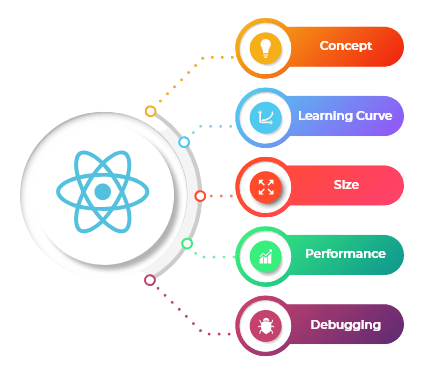
Knowledge of version control systems, especially Git, is essential for collaborative development and maintaining code history. Furthermore, developers should be adept at using browser developer tools, performance profilers, and debugging utilities to troubleshoot issues, identify performance bottlenecks, and improve user experience. These skills, combined with good problem-solving abilities and a collaborative mindset, are vital for success in a React development role.
Knowledge of React Frameworks
- Understanding Core React: It is important to have a strong foundation in React’s basic concepts such as components, state, props, lifecycle methods, hooks, and JSX. This knowledge helps when working with any React framework.
- Next.js: Next.js is a React framework that supports server-side rendering and static site generation. It provides file-based routing, API routes, and automatic code splitting, which helps improve performance and search engine optimization.
- Gatsby: Gatsby is a React-based static site generator that uses GraphQL to fetch data from different sources. It pre-renders pages to create fast websites, making it a great choice for blogs and marketing sites, aligning with the Basics of Service Design.
- Remix: Remix is a full-stack React framework that focuses on web standards. It offers built-in routing, data loading, and form handling, enabling developers to create fast and scalable web applications.
- React Native: React Native allows developers to build native mobile apps for iOS and Android using React. This framework shares most of the JavaScript codebase across platforms, reducing development time.
- UI Libraries: Libraries like Material-UI, Ant Design, and Chakra UI provide ready-made React components and design systems. These tools speed up UI development while ensuring accessibility and visual consistency.
- Supporting Tools: Knowledge of tools such as React Router for navigation, Redux for state management, and Jest with React Testing Library for testing is essential. These tools help build efficient and maintainable React applications.
- Understanding REST Principles: REST stands for Representational State Transfer, a design style for building scalable web services. It uses standard HTTP methods like GET, POST, PUT, and DELETE to perform operations on resources.
- HTTP Methods: Knowing how to use HTTP methods properly is essential. GET retrieves data, POST creates new data, PUT updates existing data, and DELETE removes data. Each method corresponds to a specific action on the server and is a fundamental topic in Web Designing Training.
- Endpoints and Resources: REST APIs expose resources via URLs called endpoints. Each endpoint represents a specific object or collection, such as users, posts, or products, and developers must understand how to structure and consume these endpoints.
- Request and Response Formats: REST APIs commonly use JSON as the data format for requests and responses. Familiarity with JSON syntax and how to parse and serialize data is important when interacting with APIs.
- Status Codes: Understanding HTTP status codes helps developers handle API responses effectively. Codes like 200 mean success, 404 indicates not found, and 500 signals a server error. Proper handling of these codes improves user experience.
- Authentication and Authorization: Many REST APIs require authentication using tokens, API keys, or OAuth. Developers should know how to securely send credentials and manage sessions when working with protected resources.
- Error Handling and Debugging: Effective error handling involves catching failed API calls and providing meaningful feedback. Using browser developer tools or Postman for testing and debugging APIs is a valuable skill for frontend developers.
- Purpose of State Management: Both Redux and Context API are tools used in React to manage state across components. They help avoid prop drilling and make state accessible to multiple components in an organized way.
- Redux Overview: Redux is a predictable state container that centralizes application state in a single store. It uses actions and reduces to update the state in a controlled and consistent manner.
- Context API Overview: Context API is a built-in React feature that allows sharing data across components without passing props manually at every level. It is ideal for simpler state needs or theming, unlike the differences seen in AngularJS Vs Angular 2 Vs Angular 4.
- State Updates in Redux: In Redux, state is updated by dispatching actions. Reducers listen for these actions and return a new state based on the action type and payload, ensuring immutability.
- State Updates in Context API: Context API updates state using React’s useState or useReducer hooks. Changes propagate to all components consuming the context, triggering re-renders where necessary.
- Middleware and Side Effects: Redux supports middleware like Redux Thunk or Redux Saga to handle asynchronous logic and side effects. Context API requires custom hooks or external libraries for complex async state management.
- When to Use Each: Redux is preferred for large-scale applications with complex state logic, while Context API works well for simpler scenarios like managing theme, authentication, or language preferences.
To Earn Your Web Developer Certification, Gain Insights From Leading Data Science Experts And Advance Your Career With ACTE’s Web Developer Courses Today!
Familiarity with REST APIs
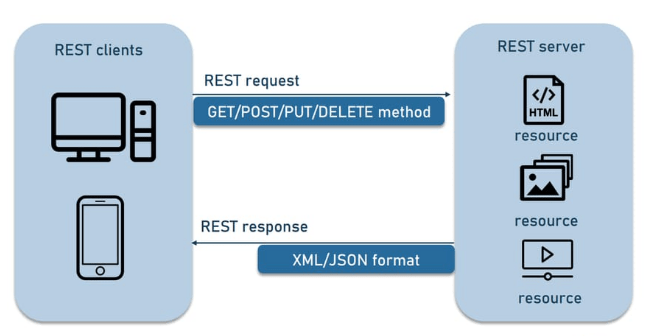
Proficiency in JavaScript and ES6+
JavaScript is the core language behind React, making a strong command of its syntax, features, and unique behaviors absolutely essential for any React developer. With the introduction of ES6 and subsequent versions (also known as ECMAScript 2015 and beyond), JavaScript became more powerful and expressive, bringing features that have greatly improved the way developers write code. Key additions include let and const, which offer block scoping for variables, reducing bugs related to variable hoisting and scope confusion. Arrow functions provide a shorter and more intuitive syntax for writing functions, especially useful for inline callbacks. Template literals simplify string manipulation by allowing embedded expressions and multi-line strings without cumbersome concatenation, which is one of the Top 10 Reasons to Learn JavaScript. Other important features include the spread and rest operators, which make it easier to work with arrays and objects by enabling concise copying, merging, and parameter handling. Additionally, the async/await syntax allows developers to write asynchronous code that looks and behaves like synchronous code, improving readability and reducing callback complexity. React developers use these ES6+ features regularly in modern codebases to write clean, efficient, and maintainable code. Beyond syntax, mastering JavaScript requires a deep understanding of its core concepts, such as closures, which allow functions to access variables from their outer scopes even after those functions have returned. A solid grasp of the event loop is crucial for managing asynchronous operations and understanding how JavaScript handles concurrency. Callbacks and promises are fundamental to handling asynchronous tasks, and understanding JavaScript’s prototypal inheritance model is important for working with objects and the language’s inheritance system. Together, these skills form the foundation for effective React development.
Are You Interested in Learning More About Web Developer? Sign Up For Our Web Developer Courses Today!
Understanding of Redux and Context API
Frontend Development Skills
Beyond mastering React itself, a frontend developer must be proficient in creating responsive, accessible, and cross-browser-compatible user interfaces. Building applications that work well on various devices and screen sizes is essential in today’s diverse web environment. To achieve this, developers often use CSS frameworks such as Tailwind CSS, Bootstrap, or Material UI. These frameworks provide pre-built components and utility classes that speed up the UI development process while maintaining consistency and design quality. Additionally, experience with CSS-in-JS libraries like styled-components or Emotion is valuable, as they allow developers to write scoped, component specific styles directly within JavaScript files, which integrates seamlessly with React’s component-based architecture. Understanding modern layout techniques is critical for those learning How to Become a PHP Developer. Developers need to be skilled with Flexbox and CSS Grid, two powerful layout systems that help create flexible and complex layouts efficiently. Implementing media queries allows interfaces to adapt fluidly across different screen sizes, ensuring usability on devices ranging from mobile phones to large desktop monitors. Accessibility, often abbreviated as a11y, is another important aspect of frontend development. Developers should design interfaces that support keyboard navigation, are compatible with screen readers, and use semantic HTML elements appropriately. These practices ensure that applications are usable by people with disabilities, which is both an ethical responsibility and a legal requirement in many regions. Furthermore, React developers benefit from understanding routing mechanisms using React Router, which enables navigation between different pages or views in a single-page application. Managing forms is also a key skill, with libraries like Formik and React Hook Form providing powerful tools for handling validation, state, and submission efficiently. Together, these skills equip frontend developers to build robust, user-friendly, and accessible web applications.
Testing and Debugging Skills
High-quality code is essential for creating reliable and maintainable React applications, and it must be as free of bugs as possible. To achieve this, React developers should be skilled in writing different types of tests, including unit tests, integration tests, and end-to-end tests. Unit tests focus on verifying individual components or functions in isolation to ensure they behave as expected. Integration tests check how multiple components or modules work together, while end-to-end tests simulate real user interactions to validate entire workflows. Libraries such as Jest and React Testing Library are popular tools used in the React ecosystem to write and run these tests effectively. These libraries provide features like test runners, assertion functions, and mocks, which allow developers to isolate dependencies and test components thoroughly, topics often covered in Web Designing Training. Additionally, understanding the principles of test-driven development (TDD), where tests are written before the code itself, helps developers build more robust and well-designed software. Alongside testing, strong debugging skills are crucial for maintaining code quality. React developers should be proficient in using browser developer tools, React Developer Tools, and logging techniques to identify and trace issues within applications. Advanced debugging involves diagnosing performance bottlenecks, memory leaks, and rendering problems that can degrade user experience. This requires a deep knowledge of React’s component lifecycle methods as well as the behavior of hooks under different rendering conditions. Effective debugging ensures that problems are resolved quickly, improving both the stability and responsiveness of React applications. Mastery of testing and debugging together helps developers deliver high-quality, efficient, and maintainable code.

